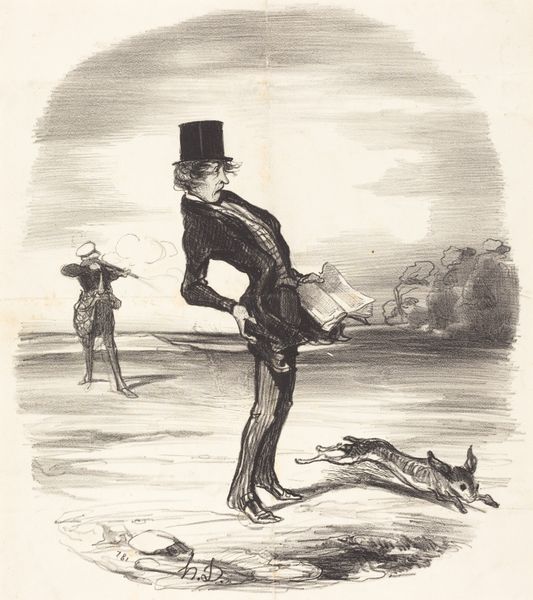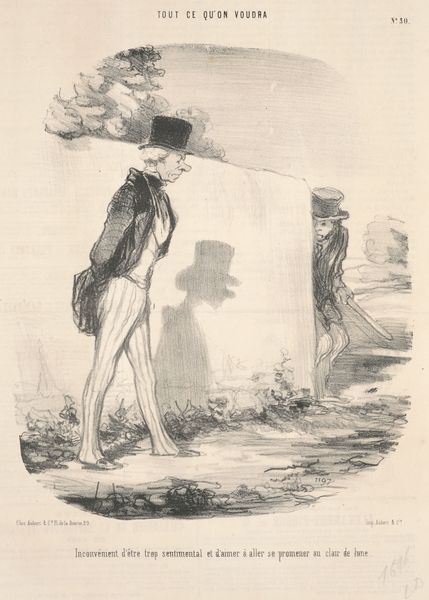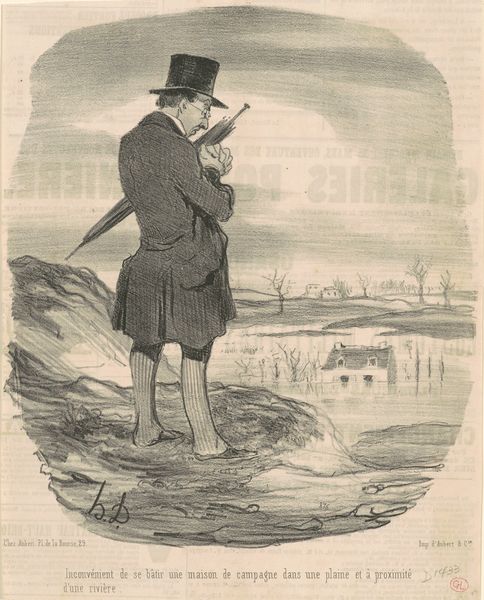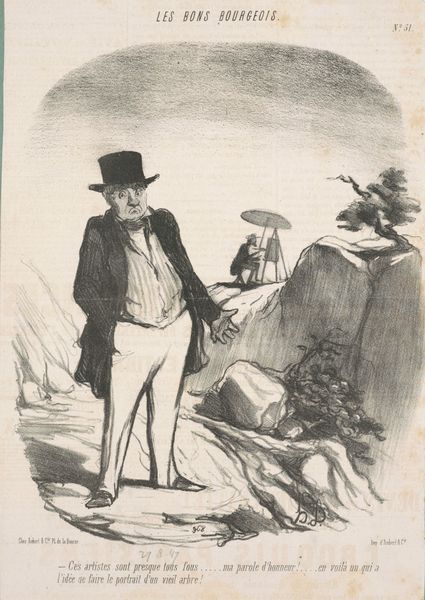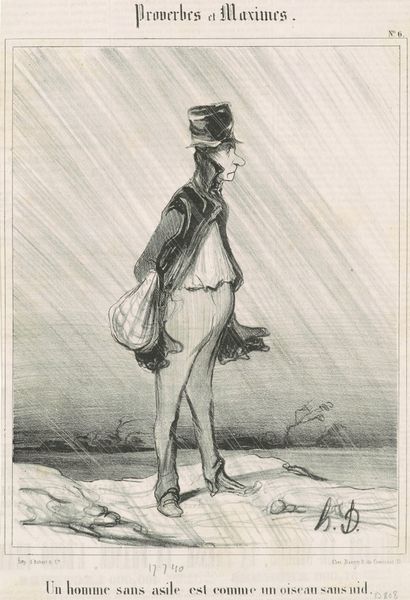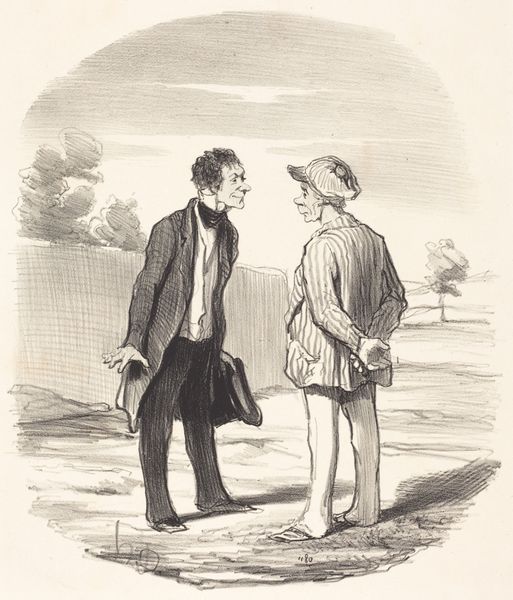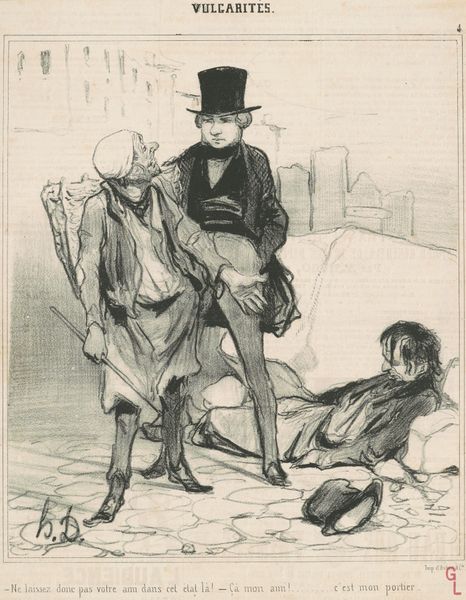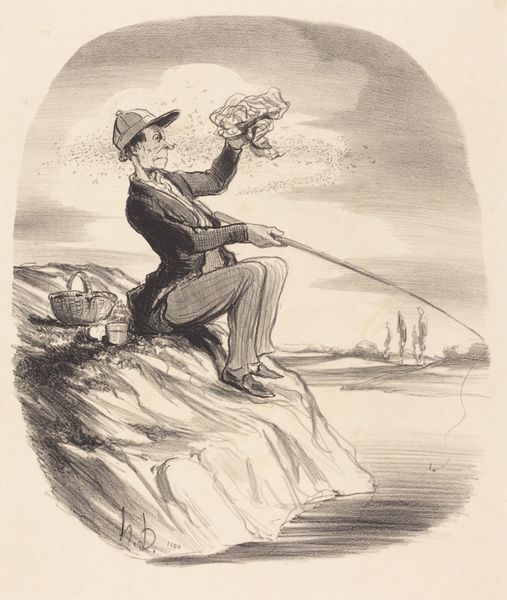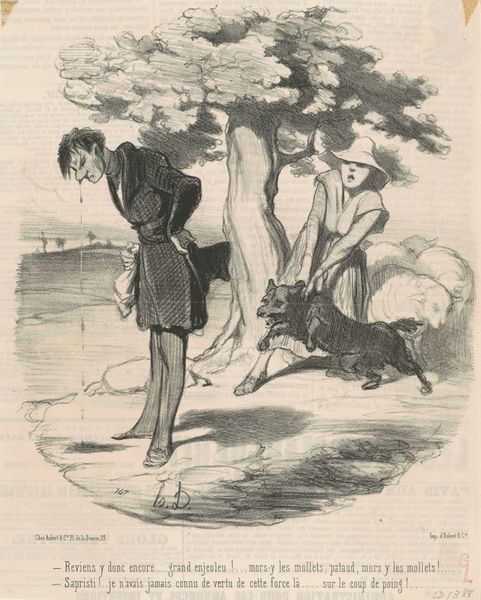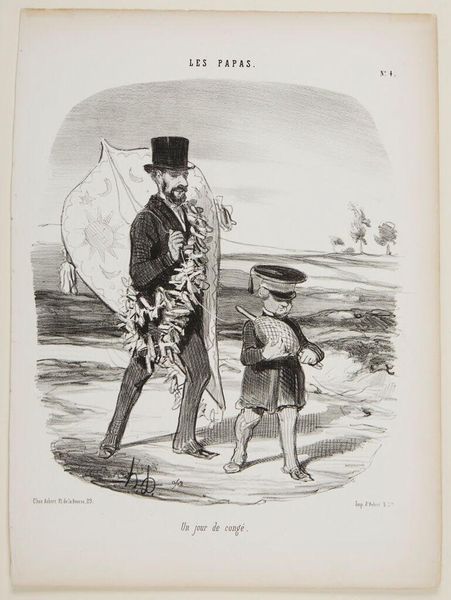
lithograph, print
#
lithograph
# print
#
caricature
#
romanticism
#
genre-painting
Copyright: National Gallery of Art: CC0 1.0
This lithograph was made by Honoré Daumier in the 19th century. It's made using a printing process that relies on the chemical repulsion of oil and water. A design is drawn with a grease-based crayon onto a smooth limestone slab, then treated with acid. When the stone is dampened and inked, the ink sticks only to the greasy drawing and is then printed onto paper. Daumier’s choice of lithography was no accident. It was a relatively quick and cheap method, perfectly suited to the mass production of satirical images for newspapers. Here, the artist depicts a man watching his wife depart on a speeding train – a marvel of the industrial revolution, and the butt of the joke. The puffing locomotive embodies the radical acceleration of modern life. Daumier's work underscores how technological advances infiltrate our most intimate relationships. Lithography democratized image-making, but also reflected on capitalism, labor, and the changing social fabric of 19th-century France. It reminds us to consider how materials, making, and context intertwine to create meaning.
Comments
No comments
Be the first to comment and join the conversation on the ultimate creative platform.
